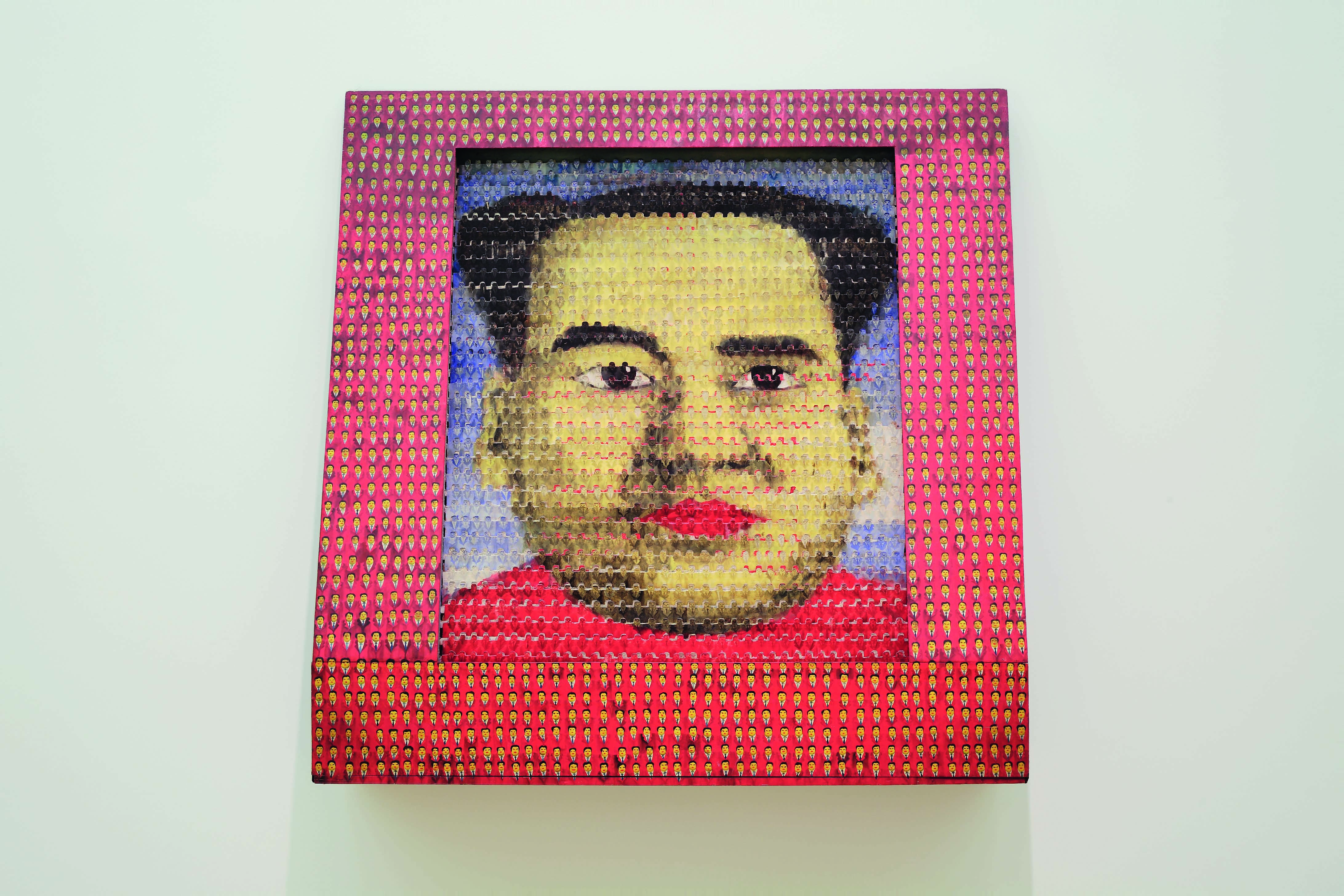The great Mao (1973) by Andy Warhol from the Marx Collection is undoubtedly one of the internationally most famous works in the Hamburger Bahnhof today. The fact that the work, created by Thomas Bayrle as early as 1966, has now been acquired for the collection of the National Gallery is a true stroke of luck. The purchase has not only secured a key work by the artist, but also a historical icon of German pop for Berlin and the public. A better complement to Warhol’s Mao could hardly be imagined. In the machine object Mao from 1966, hundreds of small figures form the “Superform”. An electric motor moves the individual figures up and down, transforming the portrait of Mao into the red star, only to calmly transform back into the image of the Great Chairman. The interplay could continue until the drive collapses or one figure falls out of line from exhaustion and blocks the entire picture.
“On a ‘whim’ that I can no longer explain exactly, I built / made / painted a ‘machine’ in which hundreds of athletes do gymnastics behind the portrait of Mao Tse-tung,” Bayrle says. Sooner or later, the viewer feels like a biologist examining an anthill and not knowing what to look at first. It is impossible to observe the individual animal and the movement flows in the entire burrow at the same time.

